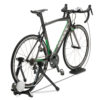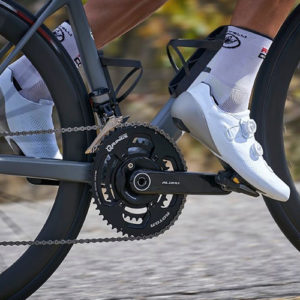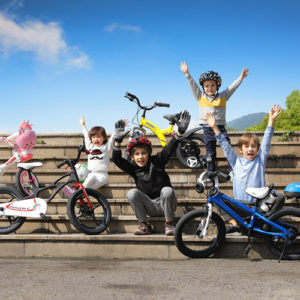No products in the cart.
Return To ShopFour-year-old August was perfectly content riding his tricycle to school when he started kindergarten, but his parents worried he’d get teased for being on three wheels. So they bought him a two-wheeler in advance of his birthday, which falls on Halloween. “He refused to try riding it without the training wheels,” recalls his mom, Shalini Roy. So they remained on until the following summer, when he agreed to give two wheels a go after much prodding from Mom. “He just zoomed off as soon as we let go,” says Roy, who lives in Toronto. “He didn’t falter once.”
As young as age four, many kids have the balance, dexterity, leg strength and understanding of basic instructions to ride a bike, says Nick Pavlakis, an instructor at Pedalheads, a company that offers bike-riding lessons throughout Ontario, Alberta, British Columbia and Washington state. But not all kids have the physical components in place, or feel emotionally prepared to ride a two-wheeler until age six or older. If parents put the pressure on, or show frustration while teaching bike-riding skills, it could further delay the process.
When your child is ready to give it a whirl, it helps to take a step-by-step approach to teaching this life skill.
1. Shop smart
Buy the right-sized set of wheels—likely 14 or 16 inches. Your child’s feet should touch the ground with straight legs when he’s sitting on the seat. If you can, spend a bit more to get a lighter bike, as they take less leg power to propel, and opt for a model that stops by pedalling backward—kids tend to fiddle with handbrakes and not focus on learning.
2. Start easy
Balance bikes, which have no pedals, are a good starting tool, as they teach kids balance and confidence. (Or you can remove pedals from a regular bicycle; find how-to instructions on the web.) You can go the training-wheel route for a few weeks, but try not to let your child get too comfy with them; he can get frustrated because they’ll slow him down, or he’ll develop habits that will have to be broken when he takes them off.
3. Set the scene
When moving to two wheels, find a safe, open space such as an empty parking lot, a paved school playground, or a flat, well-trimmed field. The narrow sidewalks and nearby traffic on neighbourhood streets can make newbies nervous. Start by having him practise stopping by pushing his pedals backwards, as well as by putting his feet down while you’re holding the bike upright for him.
4. Ready, set, go
Hold the bike seat or rest your hand on the back of your child’s neck to help steady him, then get him to start pedalling. He should look ahead, not at the ground, which will help him steer straight. (He’ll get the hang of more precision steering with practise.) Run alongside until he’s balanced and moving at a good clip, then let go. If there’s a tumble, offer comfort and encouragement so he’ll get back on and try again.
5. Starting solo
Once he gets the hang of riding, teach him the “ready position,” where one pedal is up and a little bit forward, and have him stomp down to get the bike moving without your help. He’ll need to practise building up speed quickly to stay upright.
Learning to ride a bike can take an afternoon, a week or even longer. Pavlakis suggests calling it a day when your training session has stopped being fun, and trying again the next day or week. If the process becomes really stressful, get someone else to step in as teacher, which often does the trick, or have your child take lessons from a pro.


Source : http://bitly.ws/e96r







